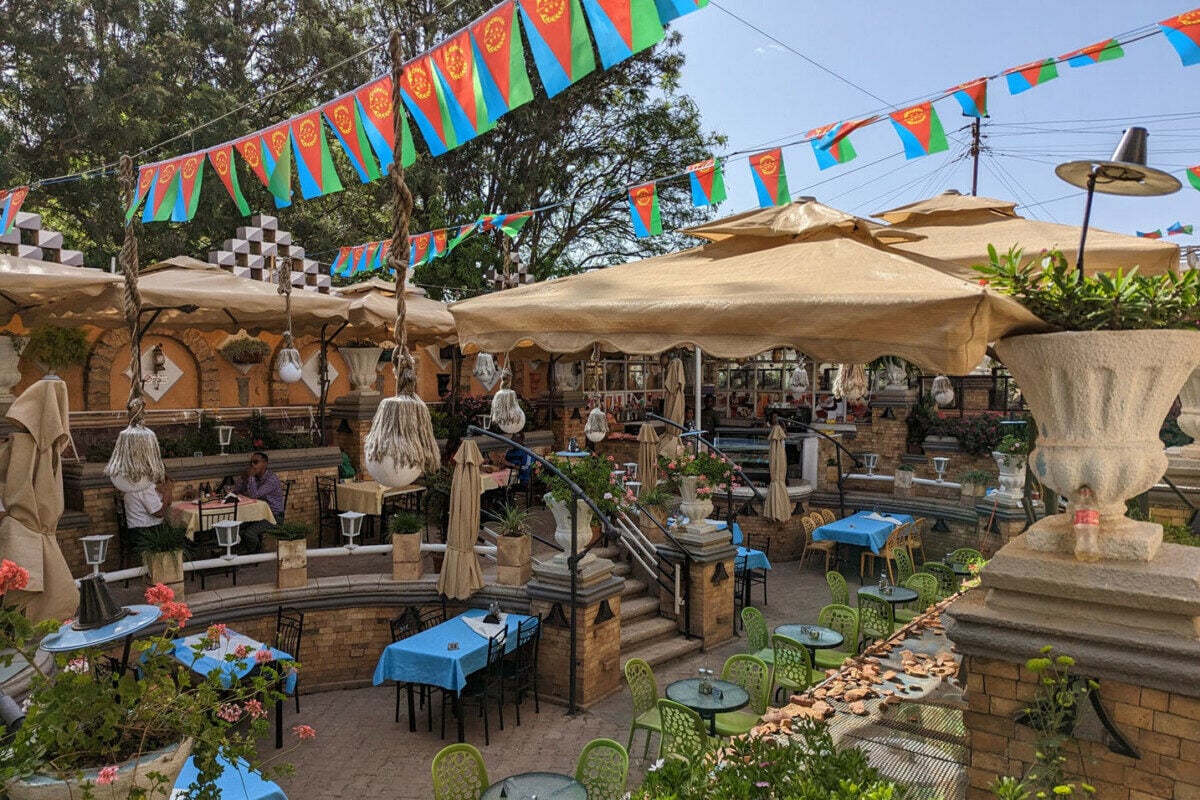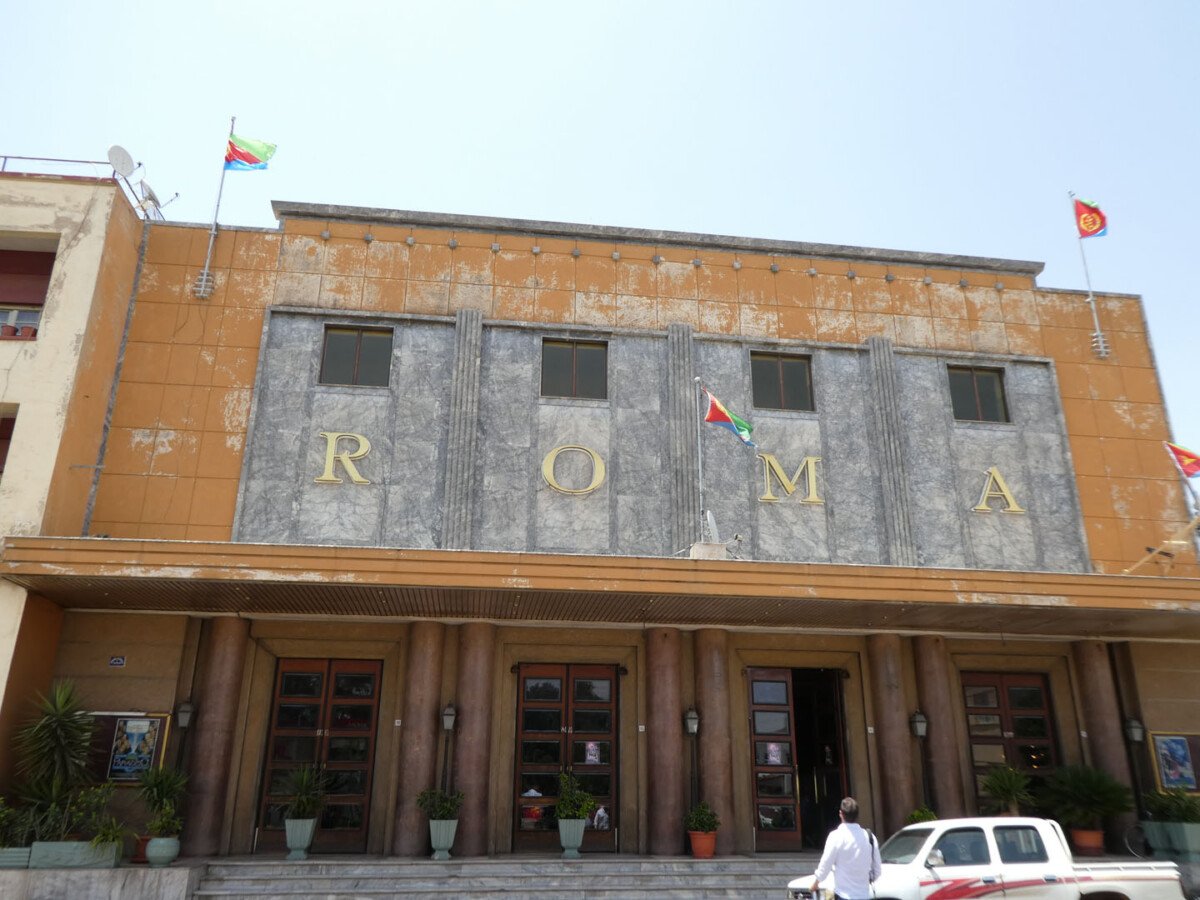Eritrea: Africa’s hermit kingdom
Eritrea is a fascinating country that is not yet on many people’s travel radar. That makes the trip to this closed country an unforgettable off-the-beaten-path experience. Eritrea has been ruled by Isaias Afewerki for years . He rules with an appropriate autocratic regime, full of difficult bureaucratic rules. Hence, the country nicknamed the ‘North Korea of Africa’. But Eritrea has a lot to offer. Capital Asmara is full of old Italian architecture, while on the coast you will find thousands of islands with white beaches and a deep blue sea. During the evening hours you can also enjoy good pasta and pizza, but with an Eritrean twist.

Eritrea
Name: State of Eritrea
Capital: Asmara
Population: 6 million
Surface area: 117,600 km²
Language: Tigrinya
Neighbouring countries: Sudan, Ethiopia, Djibouti






Asmara
In the thirties of the last century, the Italians built a lot in the capital Asmara. For many people Asmara is therefore one of the most beautiful cities in Africa. You’ll see a lot of art-deco, fascist and futuristic buildings surrounding the central area. Partly because of this, the city is also on the UNESCO World Heritage List. You don’t need a travel permit in the capital either. Outside the city must have the right documents to travel.
Keren
The second city of Eritrea is Keren. The city is located at an altitude of 1390m and is surrounded by mountain peaks, from where you have a great view of the city. One of the highlights in the city is the Mariam Dearit Shrine . This is one of the most sacred places in the country for Eritreans. The train station is also quite something. Although the train is no longer active, you can still travel through the country on a special steam train by special request!
Italian influences
It is a bizarre experience. In Eritrea you are quickly surrounded by Italian influences from the last century. Not only you see it in the houses in Asmara, but also with the food. The people of Eritrea love good coffee and a tasty pasta every now and then. You will also meet people who still speak a few words of Italian.
Massawa
The coast is a highlight for many people on their journey through Eritrea. The Eritrean coast has white beaches and a deep blue sea. Massawa is often the starting point for beach adventures. From there you can easily travel to the Dahlac Marine National Park, where you can snorkel and dive. Massawa itself has a mix of Turkish and Italian architecture and you can easily get lost here along the beach.
According to scientists, Eritrea is one of the areas where today’s people from Africa spread to the rest of the world. After the last Ice Age, according to linguists, the tribe spread further along the Nile Valley in the Middle East. The first mention of the area comes from Ancient Egypt: Queen Hatshepsut organized several trade trips along the Red Sea coast to the land of Poent. Throughout ancient times, the area that is now Eritrea remained a relevant trade area. It was, as it were, a crossroad between East Asia and the rest of the East African hinterland.
Kingdom of Aksum
The Kingdom of Aksum lasted from the first century AD for almost 900 years. At its peak it stretched from Sudan to Ethiopia and Yemen. The empire traded with India and the Byzantine Empire. After the fall of the empire, the area now called Eritrea came under the rule of several Ethiopian kingdoms.
Italian rule and war
Slowly on during the 19th Century Italians took over parts of Eritrea. This was all part of the ‘Scramble for Africa’. They did this mainly by buying land. The first Italian settlers arrived in the area around 1880. Gradually the area came under more and more Italian influence. The Italian army used Eritrea as a starting point for their plans for further conquest of the Ethiopian Empire. However, despite several attempts, the Italians failed to conquer Ethiopia.
Under Ethiopian rule and independence
After World War II, Eritrea fell under Ethiopian rule. In the early 1960s, the Eritrean People’s Liberation Front started a civil war that lasted 30 years. In 1991, when the communist regime fell, Eritrea became independent. In 1993, Isaias Afewerki was elected president. He has ruled the country with a firm hand ever since.
Already know what you are looking for?
Blog posts about Eritrea

Best group tours for solo travelers
This article will describe the most unique and hard to reach destinations as a solo traveler. If you are looking for new adventures, then this…

Interesting Facts about Eritrea
Are you ready to explore the rich history and culture of Eritrea? Join us in discovering some of the fascinating facts about this African nation!…

Eritrea’s Architectural Marvels: A Journey through Art Deco and Futurism in Asmara
Asmara, the capital city of Eritrea, might not be the first place that comes to mind when you think of stunning architectural wonders. However, this…

The wondrous architecture of Asmara
For true architecture lovers, the capital of Eritrea, Asmara, is a must-see destination in the Horn of Africa. This African capital consists of a unique…